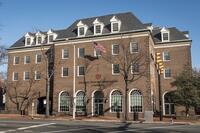If you’re thinking about a STEM education, consider the following by Dr. Jim Solti. Beyond the philosophical underpinnings, a well-rounded education generally leads to greater opportunities in most career fields.
U.S. AIR FORCE ACADEMY, Colo. (AFNS) -- I was an active-duty Airman for 15 years before realizing my gut was as valuable as my mind; my intuition as useful as scientific analyses; and my agility, creativity and innovation honed the decision-making necessary to function in complex environments.
A scientist by nature and education, I failed to realize the importance of humanities in making scientific decisions -- the political science and history inherent in every military decision.
It was then that my insatiable appetite for doctrine and history began. When esoteric mission orders arrived, their obscure nature renewed an appreciation for the sociocultural, geopolitical and legal influences behind those decisions.
As operations against the Islamic State continue, the nightly news feeds of kinetic strikes are only a single, visible aspect of an intricate decision calculus, integrating science, technology, engineering and math, with multi-network, layered analysis identifying vulnerabilities in their system.
The bombing runs are the tangible result of intangible insight into second- and third-order effects designed to result in the right pressure at the right time to turn the tide against the Islamic State of Iraq and the Levant.
Even as the Air Force remains the most technological and innovative military branch in the nation, humanities must harmonize with STEM to produce the appropriate measured response in every military action taken.
Consider the hypothetical commander's dilemma as he targets a smart bomb to release Sarin gas to nullify the enemy's force. He confirms the target, releases the weapon. The bombing is pure science.
The military satellite constellation guides the precision weapon through mechanical servos within the BLU-119 CrashPAD. Accelerometers identify first impact -- the weapon in contact with the hardened bunker. The smart fuse counts down, programmed for maximum effectiveness. Milliseconds tick by. The bomb's casing, now hundreds of steel fragments, aerosolizes Sarin liquid as the storage containers are breached. The pressure wave and thermal insult follow, decimating the bunker.
The result is a perfect harmony of science, technology, engineering and math.
But did the commander consider all the elements? A foreign wind captures the resulting explosive, a Sarin-laden plume. The poison cloud drifts and leaders now second-guess the commander's decision. The art -- the political science, the humanities -- wasn't considered, just the science.
Military operations today are an intriguing amalgamation of art and science, something I thought I left behind when I retired from active duty last year. I was wrong.
As Prussian Gen. Carol Von Clausewitz wrote in "On War": "Any insights gained and garnered by the mind in its wonderings among basic concepts are the benefits theory can provide. Theory cannot equip the mind with formulas for solving problems, nor can it mark the narrow path on which the sole solution is supposed to lie by planting a hedge of principles on either side. But it can give the mind insight into the great mass of phenomena and of their relationships, then leave it free to rise into the higher realms of action. There the mind can use its innate talents to combine them all, to seize on what is right and true as though this were a single idea formed by their concentrated pressure, as though it were a response to an immediate challenge rather than a product of thought."
Research at the Air Force's Academy manifests the same prominent Clausewitzian elements: chance, uncertainty, interdependence, perseverance and boldness.
Programs like the Astronautics Department's FalconSAT challenge cadets to provide systematic, tailored and innovative solutions to unique requirements, forcing them to balance science and humanities while instilling intangibles vitally important to developing leaders.
Our Center for Aircraft Structural Life Extension introduces cadets to a delicate balance of aircrew safety, fleet sustainment and military operations, a tension understood by active-duty maintenance officers and flight commanders.
The Academy's Warfighter Effectiveness Research Center teaches cadets how their innate knowledge of technology and social media can be applied in the military domain, how winning "hearts and minds" can save lives.
The Center for Oral History ensures cadets learn from experience. In doing so, they prepare the Academy to tackle the challenges awaiting them.
It's taken me nearly 30 years, but now I get it. The need to harmonize STEM with the humanities and social sciences isn't an academic necessity. It's a military imperative.





